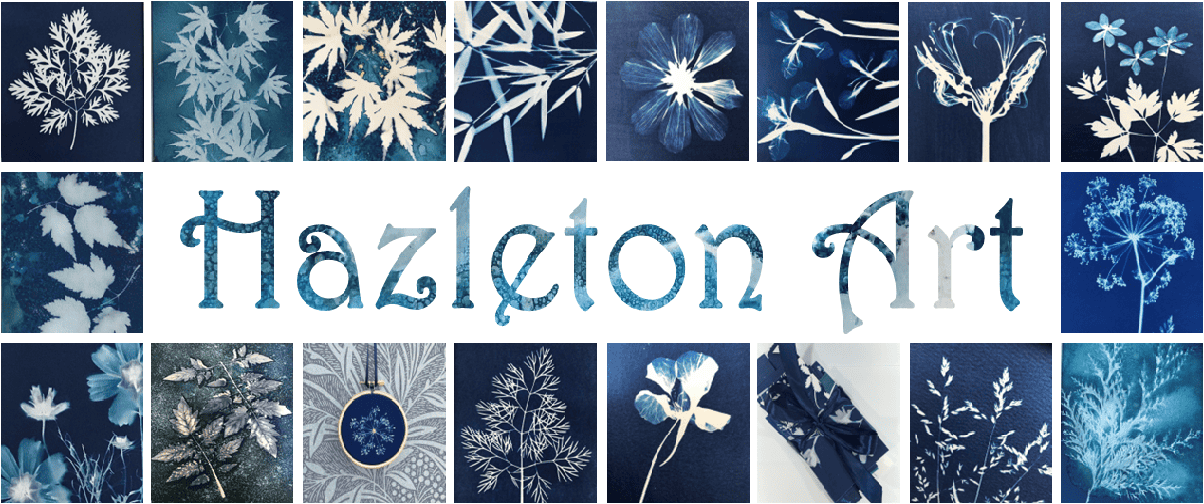Cyanotype and Prussian Blue
Cyanotype is a camera-less photographic technique, that produces a distinct ‘Prussian Blue’ colour print (Photogram) The process was discovered in 1842 by Sir John Herschel, as a means for reproducing drawings and diagrams (Blueprints). Botanist Anna Atkins in the late 19th century was the first to document seaweed and plants using this technique.
I apply a light-sensitive solution to watercolour paper, arrange the subject on top of the paper, (fresh or pressed botanicals) then expose it to sunlight (UV). The paper is then rinsed in cold water, so fixing it, resulting in a white image of the subject on a wonderful Prussian Blue background.
I find it entrancing that firstly the sun’s energy gives life to the plants I use for my art, then captures their beauty again in the Cyanotype process just magical.
In Traditional Cyanotype, the clean lines and contrast of Prussian Blue with the ‘paper white’ can make a dramatic statement, by introducing a touch of moisture and ingredients such as turmeric, salt, and soap bubbles into the process, subtle shades of grey, lighter blues, yellows and browns can be created, turning the ‘drama’ into a warmer story, this technique is known as ‘Wet’ Cyanotype.
The botanicals used, weather conditions, paper type, and the distribution of the light-sensitive solution, can all affect the shades of blue, imperfections, and final details, making this a truly original technique, imperfectly perfect.
Each photogram is handmade, unique, a one-off original, with no digital copies or Giclee prints made. They are all named, catalogued, dated, signed, and come with a Certificate of Authenticity.
Irene E Parsons
irene@hazletonart.com
For the current collections please visit https://folksy.com/shops/HazletonArt


